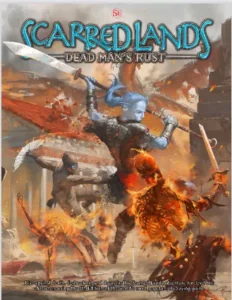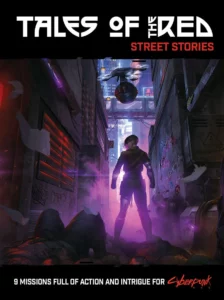written by Jason Sizemore
Before I dive into the meat of this essay, I wish to thank Monica Valentinelli for the platform to share my thoughts. Monica is a total OG. She has appeared numerous times in my Hugo Award-winning online publication Apex Magazine. We are currently running a Kickstarter to help fund our 2023. If you’d like to check out the zine, I recommend reading Monica’s “101 Softly-Delivered Writing Lessons” she wrote for our FOR WRITERS series, but much of the advice there is useful Life Advice stuff.
Since March 2020, the United States has been in the iron grip of COVID-19. In hopes of curtailing the spread of the virus and to protect others, we have lived with quarantines, masking, and a million Zoom meetings. Only recently have the restrictions been relaxed, meaning that those without high-risk health conditions and following appropriate safety protocols can once more participate fully in society. Great news for most, but stressful news for introverts like myself. What if we had grown comfortable hiding our insecurities and fears behind N95 masks and work teleconferences? So, as we venture forth, I’d like to share three strategies I used to help pull myself out of my cave and learned to be social again.
The Loneliest Time
In February 2019, I had a lesion removed from my jaw that resulted in partial facial paralysis, loss of sensation, and the complete replacement of my mandible with three sections from my left fibula. It took six months for me to recover. During that time, I saw very few people beyond my wife and kids. Around the time 2019 clicked over to 2020, I was making my first tentative steps back into the world. Then COVID-19 happened and suddenly it was back indoors for me.
My first big adventure post-surgery and post-pandemic was DisCon III in Washington, DC (December, 2021). I was determined to attend, but my anxiety was overwhelming. I’d not been in a social situation with people outside my family in nearly three years. The fear was real. But this introvert, ironically, needed his friends and acquaintances. I was bored to tears at home and was quickly losing motivation.
Determined not to let my anxiety take away my opportunity to attend DisCon III, I purposely did three things. These worked for me, and your mileage may vary, but I share them in hopes that they might prove helpful to someone else struggling with getting back out there.
Have Support Ready
Prior to the convention, I shared my situation with a good friend who would also be in attendance. I didn’t need or want a nurse or psychiatrist on hand to save me a from a panic attack. What I sought was having someone in the crowd who recognized that the reason I may not be wholly participating in a group conversation or excited to join a large dinner party was due to social anxiety.
This friend would act as an advocate in a situation where I was being pressured into doing something I was not able to handle. Even with a group as notoriously skittish and introverted as writers, people are caught in the moment and enthusiasm of group activities and want to share the joy with all their friends. This enthusiasm can cause stress and guilt unwittingly and make matters worse. Your friend will interject with something like, “Hey, that’s okay if you don’t go. Maybe catch up with us tonight when we return?” This, most of the time, will diffuse the pressure and redirect the group’s enthusiasm.
Be Kind, Unwind
I’ll preface this recommendation with an acknowledgment that it can be dependent on your personal finances and room availability. Save and plan as needed.
One of my favorite conventions is Gen Con. It is packed with sweaty, tired gamers who love the same things I do. The problem is that it is expensive, so I would stay at a friend’s house who lived in the same city as the event to save money.
Saving money is a wonderful thing. But this left me with nowhere to dash to when I absolutely needed away from the throngs of people. By the end of the four-day event, my nerves were a shredded mess and I found myself like a little kid begging to go home.
At DisCon, I made sure to get a room within walking distance. I could go crash when I needed. I had a place where I could recharge my batteries. It was wonderful and helped make the convention a great experience.
Make Yourself Accountable
This will certainly be the most difficult of my three suggestions to do, but I find accountability as an effective tool to combat that part of my brain that says “Meh, you would be happier in bed reading.” Reading in bed is, indeed, a wonderful thing. But it isn’t what your mental state needs after months of being anti-social.
To make sure I left my hotel room every morning, I planned breakfast/lunch with long-distance friends every day prior to the event. I also made sure I had to participate in some form as the publisher of Apex Magazine by running a dealer’s table in the vendor hall. The dealer’s table required that I have staff/volunteers to help out, so I was accountable to not only friends, but also to those people who were helping me out. Having accountability to folks you care about really cranks the motivation factor up.
Remember, You’re the One With All the Expectations
I hope these three recommendations are helpful. At the very least, they should have you thinking about coping strategies for getting back out in the world.
Set realistic goals. Start small if you need to. We all deal with these things at a different pace and have different mental needs. Don’t be afraid to aggressively pursue what you need to make yourself feel comfortable. Because you have friends who are looking forward to seeing you.
About the Author: Jason Sizemore is the owner and lead editor of Apex Books and Apex Magazine. He currently lives in Lexington, KY where he leads a failing campaign to convince the locals that science fiction is far more fun than horse racing.



